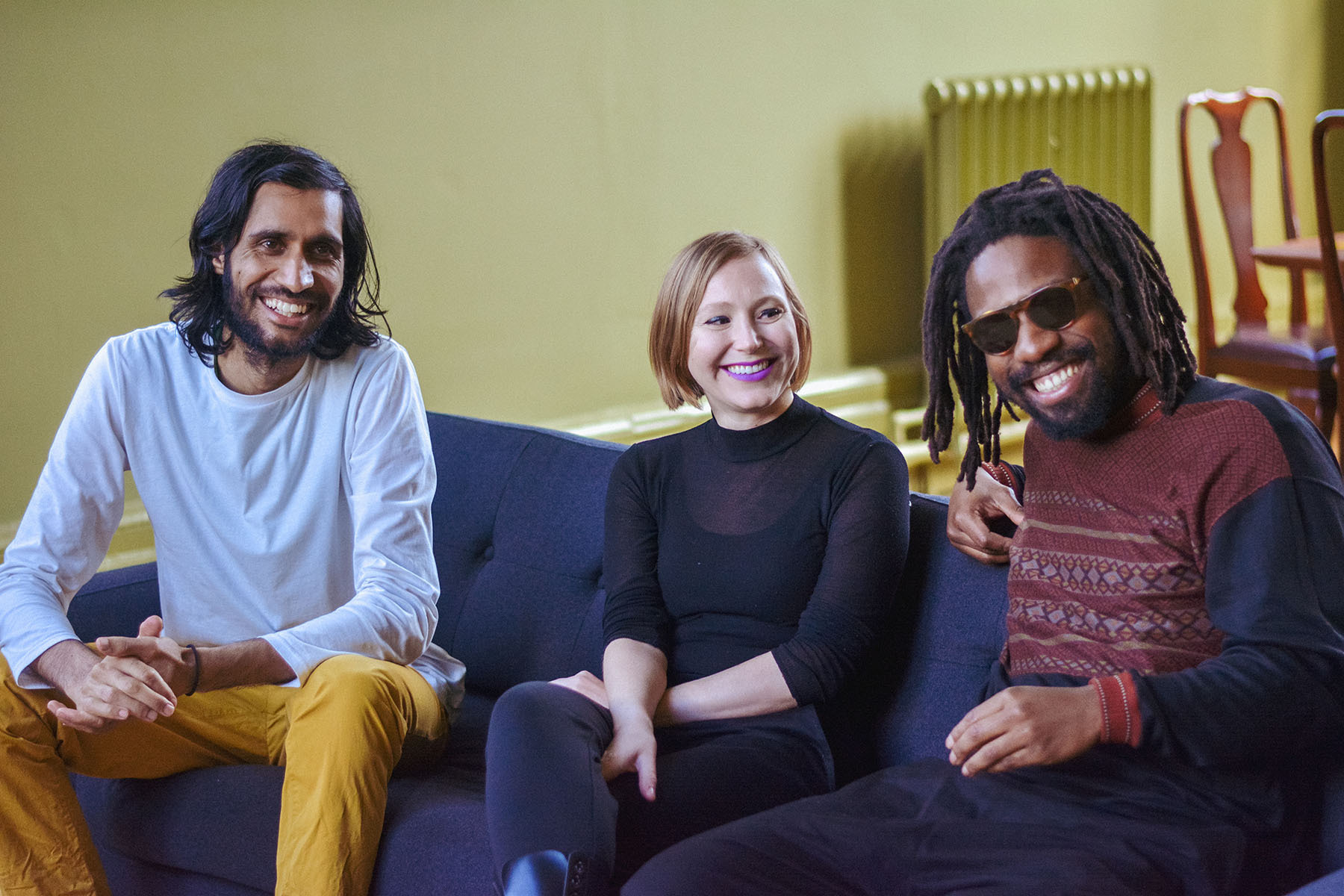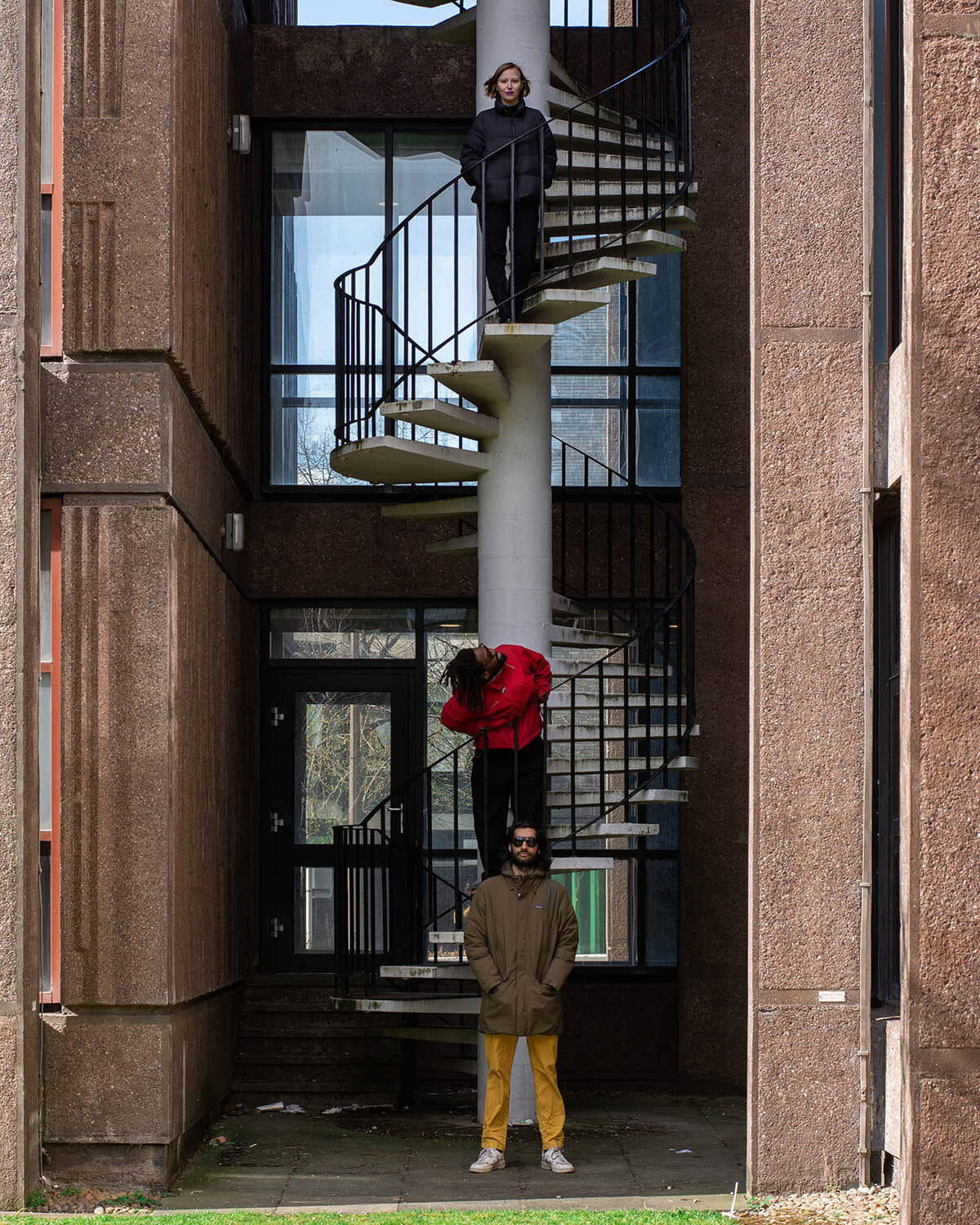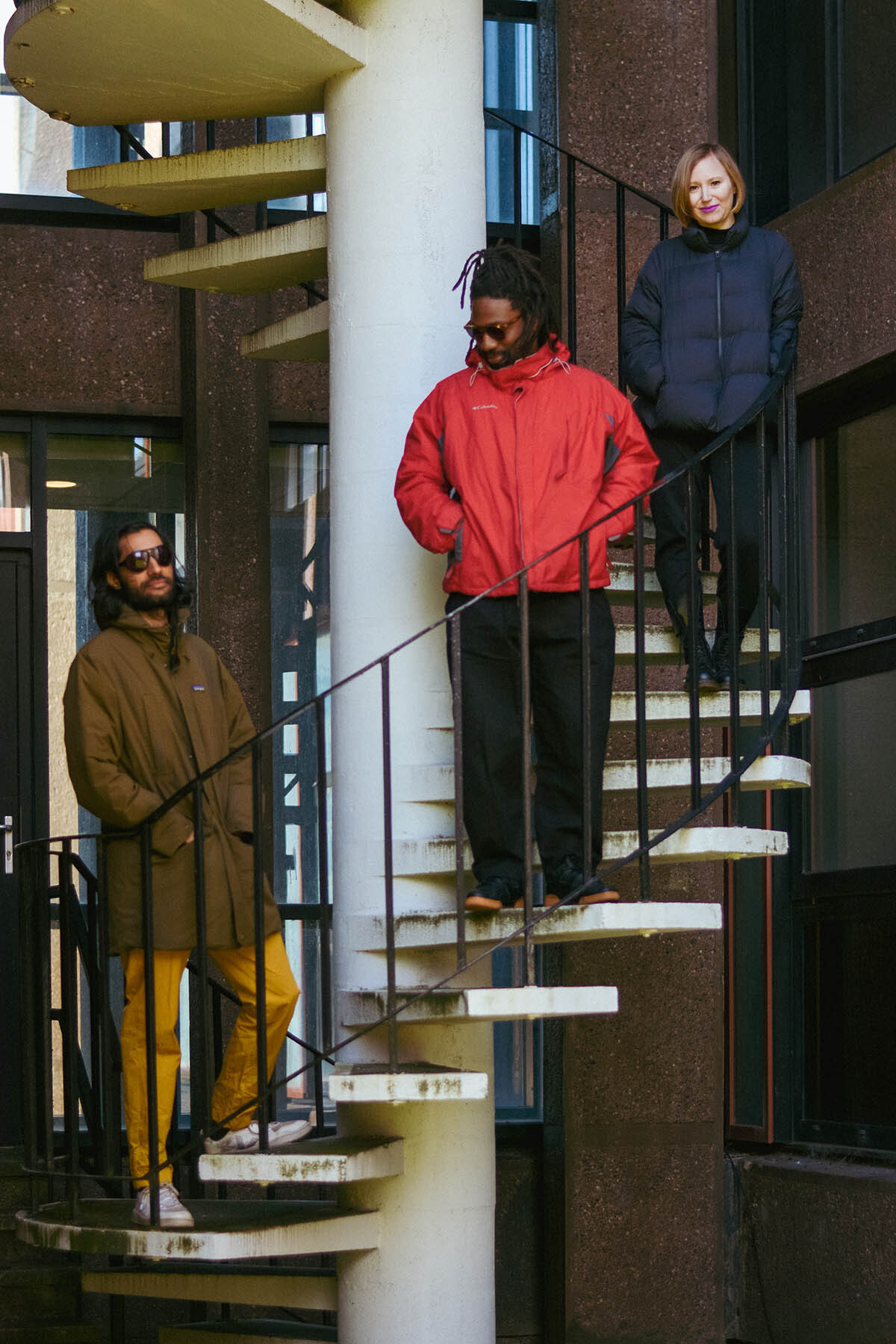Jasmine Kent-Smith: How did the idea for the magazine come about? What brought you together?
Balraj Samrai: My experience of the press was that you always had to go through somebody to pitch ideas and sometimes this had led to great success and some impressive features but at other times I felt a little bit restricted. Working on projects with Jamaican collective Equiknoxx, I realised they had a very particular story to tell. However, I felt like it took white-run labels and media publications to take them seriously for them to break through, even though they had been actively releasing for a long period of time. I still feel like that exists in the industry in terms of labels and agencies and venues and promoters; there’s an ecosystem that has ended up shutting some people out. And so, a magazine felt like a nice starting point to address that, and it was something perhaps a little more manageable than those other things.
I felt it would be good to bring in partners for the project and Tunde Adekoya felt like the right person due to his experience as a director of Big People Music, putting on great community events such as The Get Together, supporting artists in the city. Tunde was receptive to the idea and we both agreed Kamila would bring integrity and rigour to the project with her music journalism background, writing sensitively about marginalised communities and genders. Aside from this we had all known each other for several years and had even featured on a panel in 2019 so it felt like a strong unit.
Kent-Smith: Why a magazine specifically? Why did a print magazine feel like the right way to help the people that you want to represent?
Tunde Adekoya: Print magazines are like archives of experiences; what was, what is and what could be. I suppose we felt that there was a lack of these experiences being documented by the global majority of real people who make Britain what it is – a cultural melting pot. Throughout history, people have been forgotten, written out of books and publications. We thought it right to explore how people could write themselves back in if they felt they wanted to.
Kamila Rymajdo: There’s very strong radio stations in Manchester; NTS Live, Reform Radio and Pie Radio for example, but we felt that a print magazine was what was missing at the time when we came up with the concept. The magazines that did feature music had either closed or existed purely online, or focused on genres like indie or rock and did listings. Also around the same time we had this magazine idea I started doing a course on journalism innovation so I started reading about different types of journalism; slow journalism and community-based journalism from across the world. I was really inspired by those publications, especially community-ran ones and co-operatives, and I just thought it'd be really cool to try that.
Samrai: Sometimes it can also feel quite abstract when you’re from a community that doesn't read the traditional music press. So we’ve been thinking about putting the print magazine in different places; spaces where you wouldn’t usually expect to see it – as well as spaces you would – going into the communities where people live who are being written about, so they can get celebrated closer to home.

Kent-Smith: Would it be fair to say you’re trying to give people the opportunity to have a voice, rather than be a voice for them?
Samrai: Yes, fully. It’s going to be an experiment! I recently completed an action research based project that involved learning the practices around interviewing and ethical approval for a PGCert in Higher Education Teaching and I now know in the past journalists weren’t always giving me ethical approval. It’s led to articles going live where you’ve not had a say in what it’s going to look like or had a chance to approve the copy. And, my only concern in these cases was around the factual details, not in the way in which it’s been written. But this practice can make the process stressful, especially with artistic peers who may already be anxious about their public image due to the way they can be misrepresented in the media. So we hope to do things a little differently when it comes to artist approval and are committed to embed ethics and sustainability principles into our practice.
Rymajdo: Another priority is to mentor writers and creatives who might not get a chance in traditional media settings. There’s also not much regulation around how freelancers are treated within the media; there’s no minimum wage when it comes to pay; so what we wanted to do is ensure people are paid a fair wage.
Kent-Smith: What else do you strive to do differently to other publications?
Rymajdo: Sometimes there’s publications that you really like, but then you look at their partnerships or advertising, and it doesn’t quite align with what you think are their ethics. So going forward, whilst we need to be sustainable, it’s important for us to have brand partners and advertisers who do align with our ethics, and it’s something that we’ve been thinking about and acting upon from the very beginning, right down to banking with an ethical bank. We’re also really keen on accessibility, which we’ve put an onus on in how the articles are typeset in the magazine and having audio versions of all the pieces read by the writers.
Adekoya: Presenting the publication artistically in a way that meets with the community and provides a level of quality, to reframe how you document stories is the vibe. That’s what we’re trying to challenge – how people receive information, how people connect with information, to show that there’s not an archetype for journalism; people can do it their own way and still be top-tier with it.
Kent-Smith: What content do you have planned?
Rymajdo: We have a real variety of content within the magazine, from a longread to a photo story, a thinkpiece and a shorter Q&A. We wanted to ensure the magazine was accessible while having real depth, new perspectives and even provocations. As I mentioned previously, we also wanted to work with people who hadn’t necessarily written journalistically before, which we feel has turned into a true blessing, with articles you’ll likely not read anywhere else. We’re experimenting with new formats too. For example, one of the articles has taken on the form of part interview, part poetry, which feels like a fresh way to share an artist’s story.
Samrai: We’ve also been thinking about partnering with organisations to connect in and work in collaboration. For example, we’ve commissioned an article on unionising DJing and we’ve spoken to the Musicians Union who are keen to support the project. We feel there’s a lack of awareness around why it could be useful to be in a union and there’s definitely a shortage of members from global majority backgrounds. We hope to provide information and options for our readers, hopefully demystifying and challenging organisations in the process.

Kent-Smith: How do you navitage having public funding from Arts Council England and Manchester Music City while also maintaining your editorial independence?
Samrai: We were open about what we wanted to do from the start with an anti-racist, radical mission statement that we included as part of our applications, so the funders are aware, and while they’ve been kept in the loop, there’s been no intervention in what we’re commissioning. If anything, they’ve had some interesting advice that we wouldn’t have thought of previously. But we’re not afraid to challenge funding organisations – I think our very existence as a magazine is a challenge. Something I’ve learned is that with public money, it often doesn’t reach all the areas it should do so we’re hoping this project can tap into new spaces where people haven’t traditionally felt they had access to it.
Rymajdo: Editorial independence is super important to us, so going forward, if we continue, we would join a regulatory body and have an advisory board. It’s something we’ve discussed internally from the beginning as part of our research and development period.
Kent-Smith: How often are you going to be publishing the magazine, and how will you survive long-term?
Adekoya: One of the things that I’ve always appreciated about certain artists that I’ve fallen in love with, is that they’ve gone away, they’ve lived and then they’ve come back. For example, someone like Sade would only release an album every 5-10 years but every time she’d come back with something phenomenal and her music is timeless until this day. So for us with this magazine, I’m hoping we don’t have to feel like we have to stick to a rigid schedule, but actually be responsive to what’s going on within our communities.
Rymajdo: In terms of sustainability, I think we’re going to have to have at least three different revenue streams or potentially more. Given our experience running club nights and festivals, events might turn out to be a major source of revenue for us in the future, especially as people being reluctant to pay for journalism is a continuing issue across the board.
Kent-Smith: What do you hope people will feel and take away when they interact with the magazine?
Samrai: We want there to be frank discussion and information, but joy and pride too without artists and scenes being orientalised. It’s hard to describe, but when you read something really great, a novel for example, and you think, that was really riveting, it would be amazing to get to that place, and maybe we won’t get there straight away but if there are those moments, that would feel like an achievement.
Rymajdo: We receive so much content on a daily basis and oftentimes you forget what you read even an hour ago, so for a story to stay with someone, to have longevity, that would feel like an accomplishment for us.
Adekoya: I want people to feel ownership of it, to feel proud, I want them to feel and see themselves in the pages of the magazine, and to feel seen.
Kent-Smith: Is that where the name SEEN came from?
Samrai: It was actually a bit of an accident, we were on a call like this, on Zoom, and I think I was talking about ‘the zine’, which is how we envisaged it at first, very DIY sort of aesthetic. Tunde misheard it as saying “seen”; he thought that’s the name we were proposing, and it turned into a bit of a lightbulb moment, because we were really struggling with the name. We workshopped it and tested it and in the end, it just felt right. Tunde had also done this project called See My Dunya with Hamdi [HMD], who’s a local artist here and actually our cover story, and I just felt like that work was very powerful; it allowed me to see a culture and a community in a way that I’d not seen before, then Kamila had written about it, and so there was a link there too that resonated.
Kent-Smith: Serendipity.
Adekoya: Exactly.
